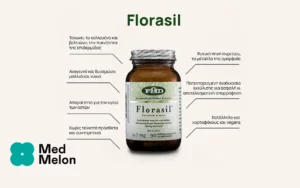Scientific Names of Silverweed: Potentilla anserina L. [Fam. Rosaceae]
Forms:
Dried, powdered, or liquid extract of all parts of Potentilla anserina.
Traditional Usage:
– Antispasmodic
– Astringent Wash
– Diarrhea
– Liver Cleansing
– Menstrual Cramps
– Mouth Inflammation
– Nausea
– Nervousness
– Poultice
– Premenstrual Syndrome
– Scar Prevention
– Skin Problems
– Sore Throat
Overview:
Silverweed herb, Potentilla anserina L. [Fam. Rosaceae], a type of cinquefoil, is found in moderately temperate and colder regions of Earth’s northern hemisphere. Potentilla’s name is derived from the Latin word “potens” meaning powerful. The common name ‘silverweed’ describes the silky-grey, hairy appearance of the plant. Potentilla has an almond-like fragrance and a dry taste, and the tea has a tightening or astringent effect. It can be used both internally and externally and traditionally has been given to treat diarrhea, menstrual cramps, PMS, and sore throat. Silverweed is listed in the pharmacopoeias of both Germany and Sweden. Silverweed, similar to other herbs traditionally used to treat diarrhea and dysentry, is rich in tannins. Tannins act to reduce water within the bowel and ‘dry-up’ loose stools. Studies done in 1975 show that an extract from Potentilla anserina, which when given alone lengthens the gastrointestinal passage time and treats diarrhea, also antagonizes the laxative effect of extracts from Rheum sinens, Rhamnus frangula and Senna. All the effects of silverweed tested in the area of the gastro-intestinal tract behaved in a purely additive way and were therefore reliable or “predictable”. In the past, Potentilla was also considered a treatment for lockjaw and jaundice and was used to remove freckles and prevent scarring from smallpox. Some studies show silverweed to be an antispasmodic, although these results are not undisputed. Potentilla anserina subspecies pacifica was also used traditionally as a food and medicine by First Nation’s groups along the Pacific coast of North America including in British Columbia, Washington and Oregon. The long, fleshy taproots were highly valued as foods by the Haida, Nuu-chah-nulth and Kwakwaka’wakw. The Haida collected the roots and boiled them and drank the tea as a purgative. Thus, silverweed can be used for opposite purposes depending upon the part used and dosage.
Active Ingredients:
Silverweed contains: 6-10% tannins (ellagic-acid type, monomeric and dimeric ellagitannins), Flavonoids (quercetin and myricetin glycosides) and proanthocyanidins as well as choline and compounds of unknown structure with spasmolytic activity. A recent study reported the presence of 2-pyrone-4,6-dicarboxylic acid in silverweed, a compound previously only found in bacteria and not in higher plants. [Wilkes S and Glasl H. 2001. Isolation, characterization, and systematic significance of 2-pyrone-4,6-dicarboxylic acid in Rosaceae. Phytochemistry 2001 Oct; 58(3): 441-9.]
Suggested Amount:
Tea: Pour boiling water over 2- 4 g of finely chopped silverweed, steep ten minutes, then strain. Drink several times a day between meals. If condition persists for 3 or 4 days consult a physician. 1 teaspoon = 0.7 grams. Daily dose should not exceed 6 grams.
Drug Interactions:
None known.
Contraindications:
None known.
Side Effects:
May cause stomach irritation.
References:
De Smet, P., Keller, K., Hansel, R. and R. Chandler (eds.) 1993. Adverse Effects of Herbal Drugs. Springer-Verlag New York Berlin Heidelberg. Pp. 66.
Pojar, J. and A. MacKinnon (Eds.) 1994. Plants of Coastal British Columbia, including Washington, Oregon and Alaska. Publ. by Lone Pine Publishing, 202A-1110 Seymour Street, Vancouver, B.C., Canada, V6B 3N3. Pp. 186.
Swiezewska E, Chojnacki T. 1989. The occurrence of unique, long-chain polyprenols in the leaves of Potentilla species. Acta Biochim Pol. 1989; 36(2): 143-58.
Vogel G. 1975. [Predictability of the activity of drug combinations–yes or no (author’s transl)]. Arzneimittelforschung. 1975 Sep; 25(9): 1356-65. German.
Wichtl M and NG Bisset (eds). 1994. Silverweed Herb. In Herbal Drugs and Phyto-pharmaceuticals. (English translation by Norman Grainger Bisset). CRC Press, Stuttgart, Pp. 79-80.




